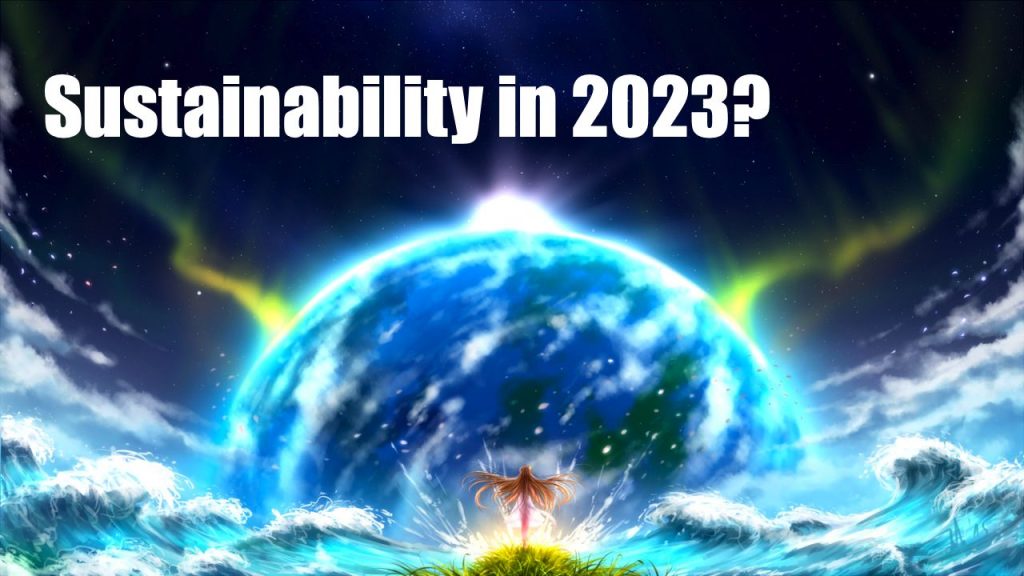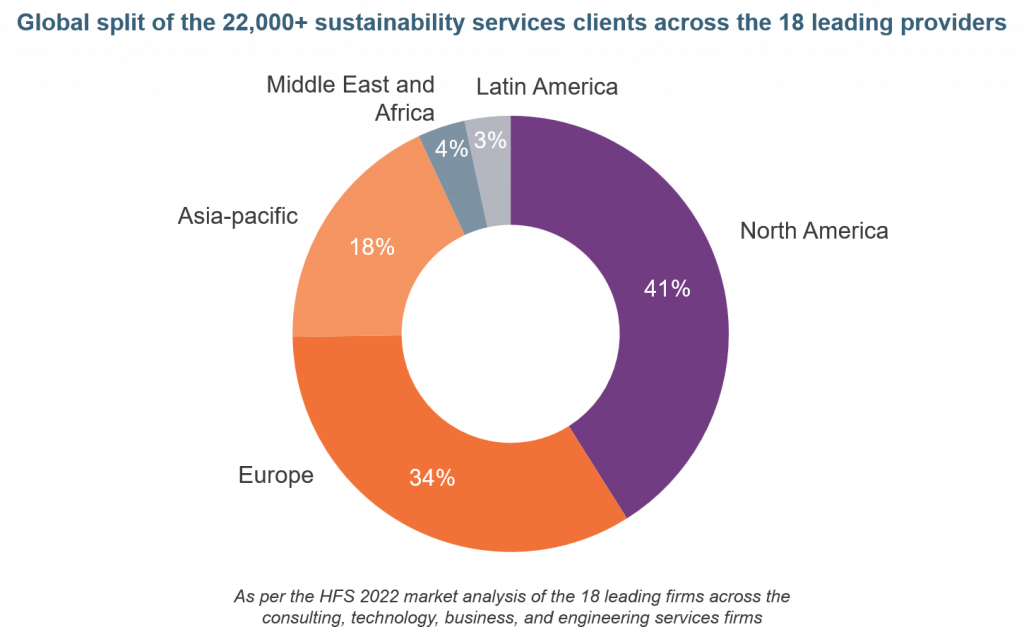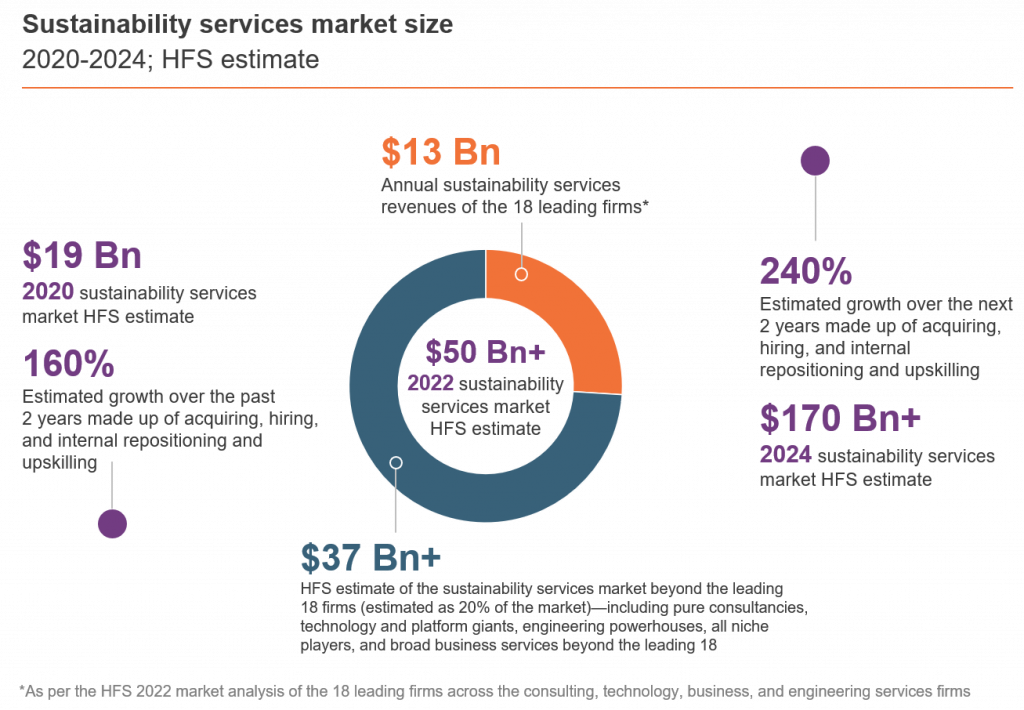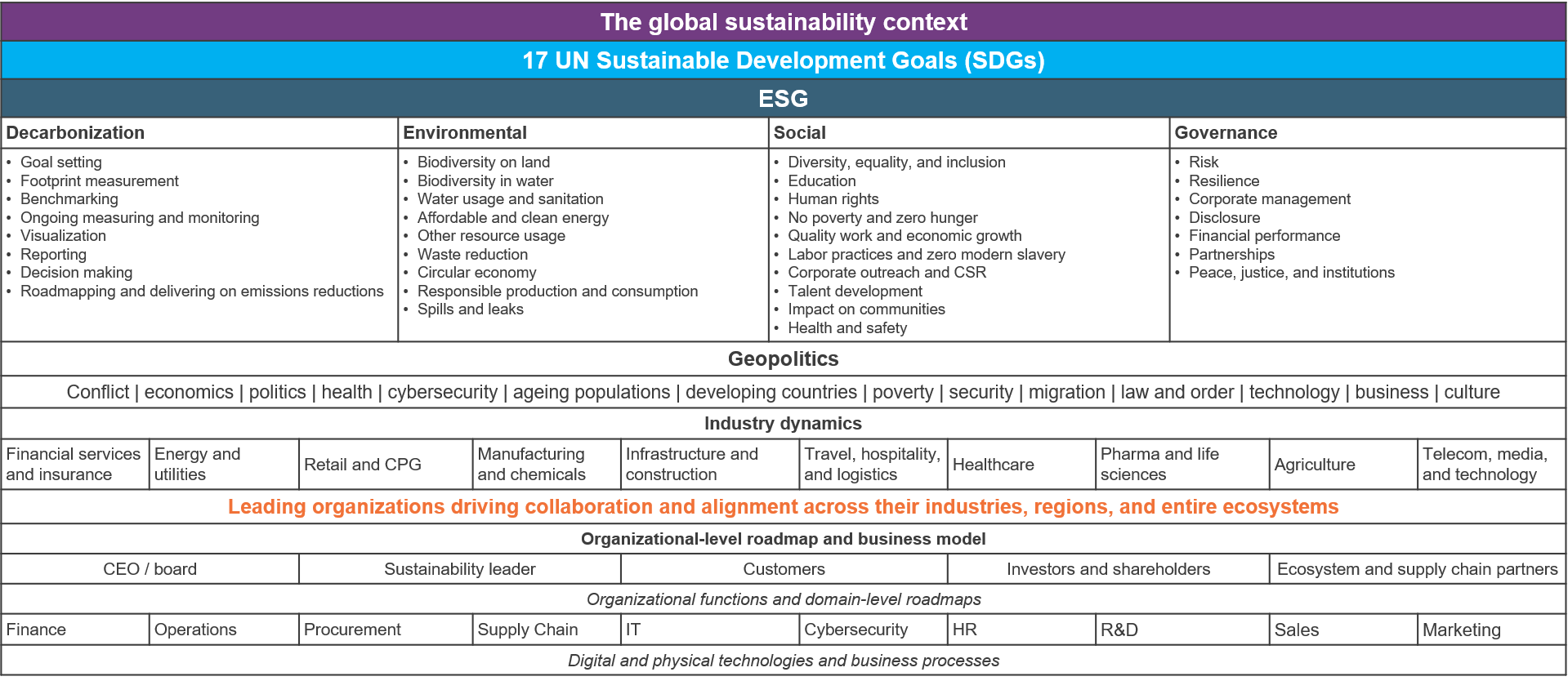
We’re still clueless about sustainability. Key people, in key organizations, in key rooms, still need help with contextualizing their roles and where to best spend their time and energy. Here we run over some musing across the global context, sustainability services, the energy and utilities industries, and the supply chain. If you make it to the bottom, you’ll find the last sources of optimism in the hand of both services firms and the increasingly powerful coalitions of the willing, hoping to overcome the failures of politics and apologize later.
In 2023 we’ll continue to get little to no help from politics or changes in consumer behavior
COP28, the UN climate summit series’ next installment in the UAE, will likely be as useless as COP27. See our recent take on why mediocrity at COP27 was worse than its implosion. Organizations we speak with are often lacking in materiality assessments and the roadmaps that need to encompass the whole global sustainability context. Too often their energy is easily diverted to the latest problem.
Are we going to hit a 1.5-degree temperature rise in 2023?
Probably not. But in a few years, probably yes. The Economist has a good take on the all-but-death of the Paris Agreement target.
Will we see climate related disasters and system tipping points?
Almost certainly on both fronts. Here’s a good Guardian compilation of an Oxford University summary. Floods, fires, droughts, and more will continue to reinforce that policy, and the public cannot move at the speed and systems-level required to tackle climate change and the global sustainability context covering all environmental, social, and governance (ESG) factors. It’s already too late for so many. It’s now a question of how bad it gets for how many until we can pull it back. Adaptation and mitigation must go hand-in-mad. Mercifully, most have realized this… but funding for both remains far below what is necessary (refer again to our COP27 take, including comments on the long-awaited inclusion of “loss and damage”)
Sustainability movement will be global, however, which does bring promise
North America and Europe made a head start on many fronts but now the energy transition, more progressive governments, and a search for the business value in sustainability. Our Data Viewpoint builds on Exhibit 1.
Exhibit 1. North America and Europe still dominate sustainability demand. But soaring growth is global

Source: HFS Research, 2022
Speaking of the energy transition
Our latest data shows that almost all organizations are upping their ambition, priority, and, crucially, spending on sustainability, and the biggest $50 billion+ firms with the systems-changing influence we need are leading that charge. Wait until our sweeping energy transition study is published early in 2023 for more. That spending will go across digital and physical technology. Technology like digital twins, IoT, and analytics will continue to fuel asset management and optimization, moves towards smart grids, new customer experiences, and much more. While infrastructure will see pouring funding across hydrogen, carbon capture, and all manner of renewable sources, as well as natural gas as a transition fuel away from the worst polluters.
On supply chains
Again we’ll see growth in spending across value chains from planning through to after-sales. Crucially, circular economy efforts will continue to get new context, although far from what we need. Look out for an important circularity in the chemicals industry case study, where we’ll look broader at minimizing impacts across the sustainability factors in a product’s life cycle—including efforts to recirculate, repurpose, reuse, remanufacture, reduce, repair, and recycle.
Sustainability services growth and investment will continue to soar across consulting, technology, engineering, and business services
We expect approximately 240%, 190%, and 210% growth in revenues, headcounts, and client numbers, respectively, over the next two years (see Exhibit 2). Together, the 18 leading sustainability services firms currently account for more than $13 billion annually, 68,000 employees, and 22,000 clients that are either dedicated to or partly engaged in sustainability services. Consider pure management consultants, technology and platform giants, engineering powerhouses, and services firms outside the leading 18, and we’d estimate a $50 billion and growing sustainability services market. A few years from now, we’re looking at $200 billion. See more in our assessment of growth drivers, and the full market analysis here.
Exhibit 2. The sustainability services market is approaching $200 billion

Source: HFS Research, 2022
Possibly more importantly
All manner of services firms will move from trying to embed sustainability internally through upskilling, hiring, acquiring, and repositioning—and towards embedding these skills and needs with their clients. We’ll see vastly varying results. See our more detailed outline of the various internal, client-facing and systems-changing efforts. Acquisitions and partnerships will both come from all services angles—and sustainability small-medium firms will continue to see so much investment that poor analysts like us will not be able to keep up. But do ask us if you fancy finding a winner…
The Bottom Line: We’re still unbelievably f******. We need to keep helping people with context. But my optimism is the clarity businesses are experiencing that they hold the last levers.
My last prediction of sorts for 2023 is more optimistic than my general assessment of the global sustainability context. We’ll see more and more “coalitions of the willing”. Businesses and key leaders within them will continue to find each other to move first and set the bar politics and the public can be pulled in alignment with. There’s an essential need to give the vast majority of organizations—whether business or government—the confidence they’ve desperately lacked to date without regulation and best practices. Imagine is one such group.
I can only hope 2023 brings enough clarity for the right people, right organizations, in the right rooms, to be the opportunity and responsibility to go publicly out in front and give the world the templates it needs to align to the global sustainability context.
Exhibit 3. The global sustainability context addresses all UN Goals and ESG factors and must cascade across systems and throughout organizations

Source: HFS Research, 2022
HFS subscribers can download the report here
(available free for a limited time).
Posted in : Energy, Supply Chain, supply-chain-management, sustainability, Utilities & Resources






